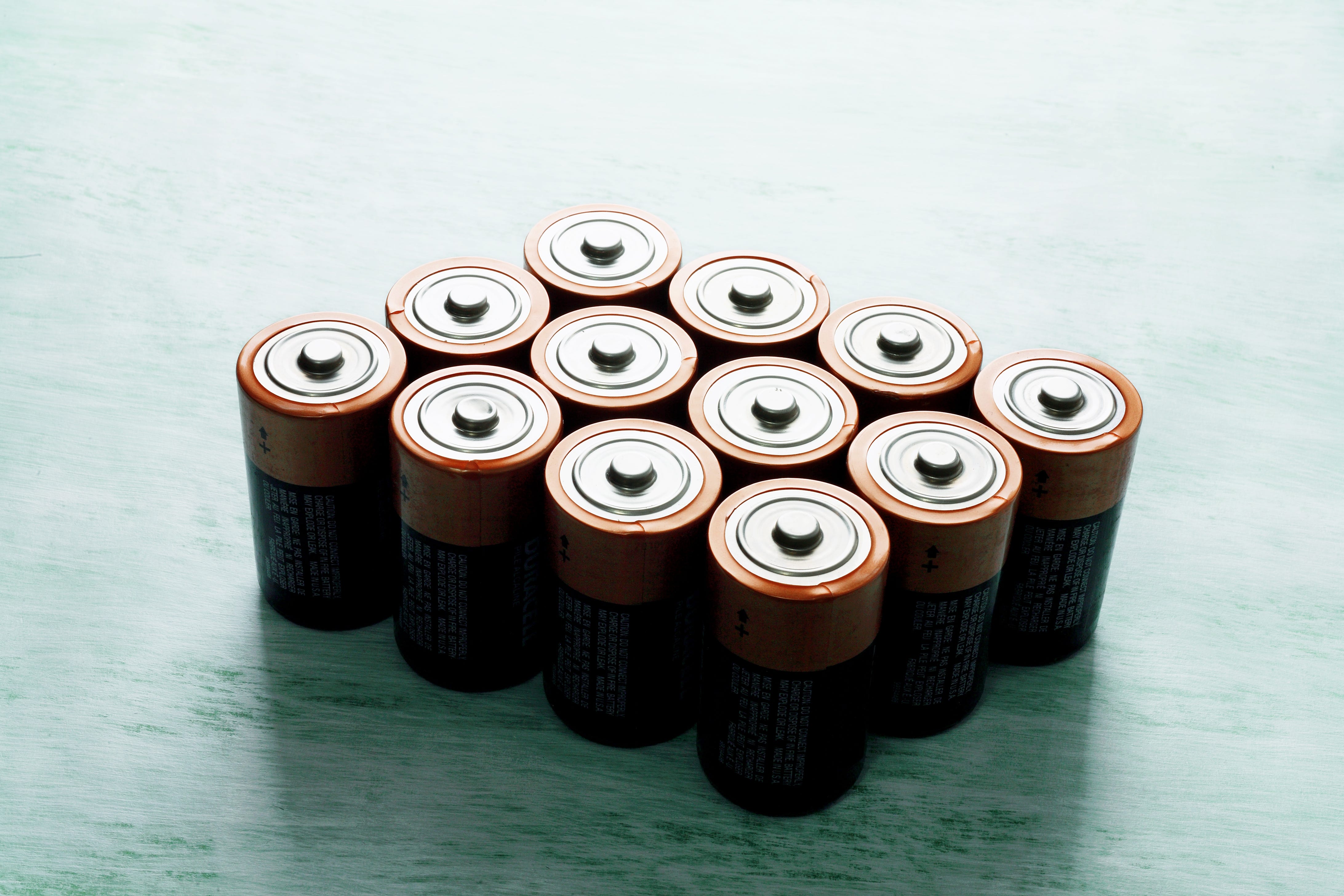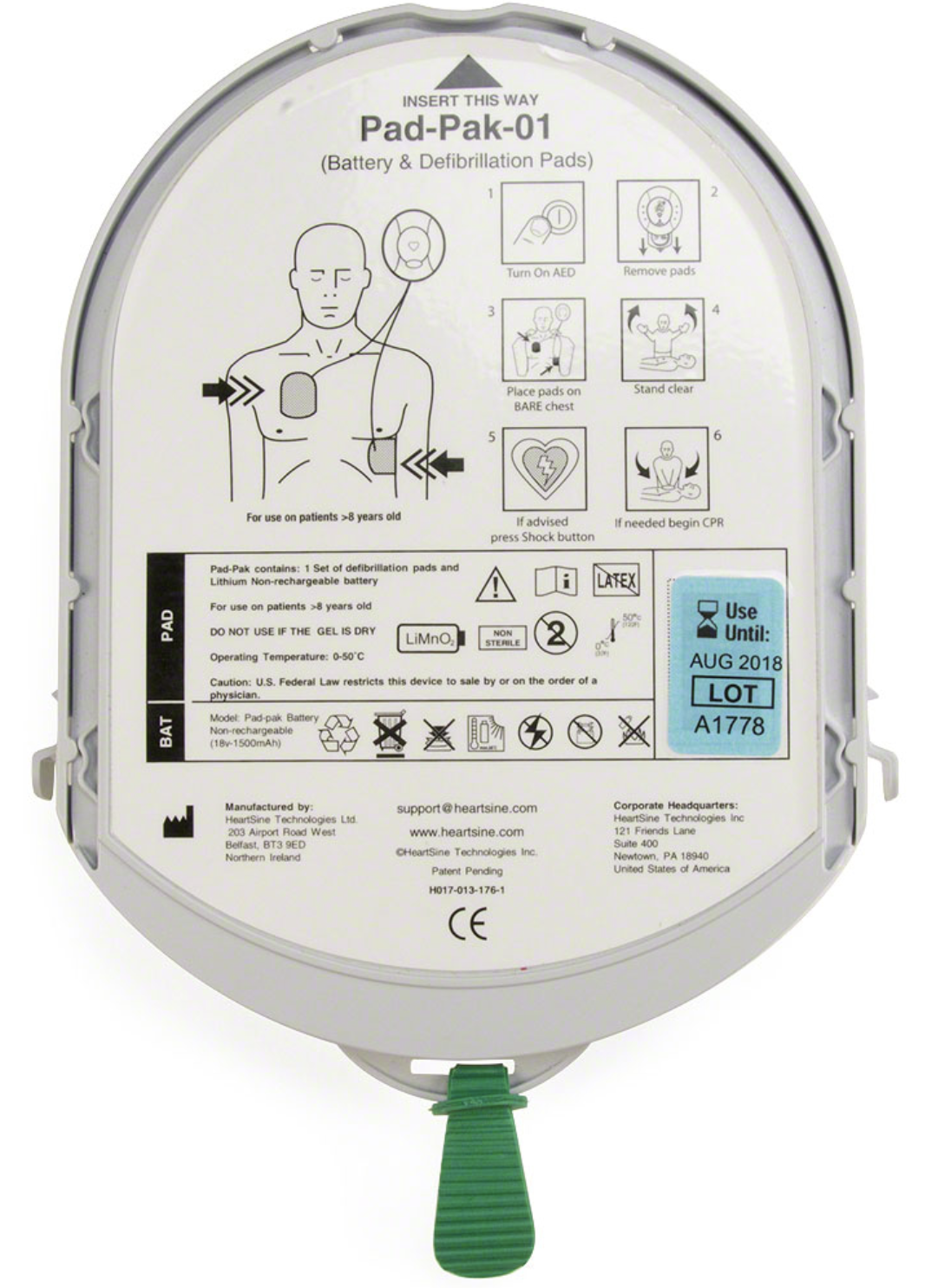AED Batteries: A Complete Guide
- Jul 13, 2023

AED batteries are designed to power an automated external defibrillator (AED). This portable medical device analyzes a person’s heart rhythm and delivers an electric shock to restore a heart to its normal rhythm.

Can you buy the wrong batteries for your AED?
Yes, it is possible to buy the wrong batteries for your AED. AEDs require specific batteries that meet the power requirements and specifications of the AED device. Using incorrect batteries can have several negative consequences.
The AED may malfunction if the batteries do not provide the required power or voltage. Using non-specific batteries not from their manufacturer can damage the AED or void its warranty. Ensure the proper functioning of your AED by purchasing and using the batteries recommended by the manufacturer.
Types of AED Batteries
Most AED batteries contain a chemical element known as lithium which is known for being lightweight, having a high energy density, and holding a long shelf life. There are different types of lithium batteries available for AEDs; however, the types of battery used on a device depend on the make and model of the AED.
- Standard batteries: Some devices like the ZOLL AED PLUS take standard batteries such as the Duracell Type 123 Lithium Batteries that come in a set of 10. These batteries have a 5-year expiration date and a shelf life of 10 years.

- Battery packs: Battery packs are the most common types of batteries used in AEDs and eliminate the need to insert multiple batteries into the AED individually. With a battery pack, you can save time and effort during battery replacement or an emergency if the AED’s batteries quickly need changing. The AED manufacturer typically designs these lithium-based packs to meet the necessary power the device needs, such as the Philips HeartStart Onsite/FRx AED Battery, Cardiac Science Intellisense Powerheart G3 Battery, or the Defibtech Lifeline AED Battery Pack. See more battery pack options.

- Pad Paks: Pad Paks, as seen in the HeartSine samaritan AED Adult and Pediatric Pad-Paks, combine both AED electrode pads and batteries into one unit. This provides a cost-effective solution by simplifying the maintenance and replacement process.

- Rechargeable Batteries: Specific AEDs can use rechargeable batteries, which can be recharged so the battery can be reused, reducing the need for frequent battery replacements. Check out AED.com’s rechargeable battery options. When using rechargeable batteries, following the manufacturer’s instructions regarding proper charging procedures and maintenance is essential.

Note: While there are multiple types of AED batteries, each AED model requires one specific type of battery designed to work with that AED. Some AEDs offer an aviation version of the standard battery for the unit, and others may offer a rechargeable option, though it is not available for all AEDs.
AED Battery Disposal
Following local regulations and guidelines for battery disposal when discarding AED batteries is vital to protect the environment. Like any battery, AED batteries are considered dangerous due to their chemical components and should not be tossed in the regular trash.
Contact your local waste management authority or recycling centers to inquire about the proper disposal methods for hazardous batteries. They can guide you to drop-off locations or specific recycling programs for batteries.
Training & Practicing with AED Batteries
Understanding some common problems many users encounter when dealing with AED batteries is essential. The following issues may arise, but knowing the proper solution can help resolve issues faster.
- Low battery warning: Low battery warning is bound to happen on any AED device as the batteries drain. A typical low battery warning can be beeping, failed self-checks, a red mark on the “failing status indicator,” or the device simply doesn’t have enough power. When this happens, it’s vital to replace the batteries promptly and refer to the manufacturer’s instructions for the specific battery replacement procedure. Keeping spare batteries readily available can help ensure the uninterrupted operation of the AED.
- Battery corrosion: If you notice signs of corrosion on the battery, remove them. Use a soft cloth to clean the battery slot before inserting new ones. Ensure that the batteries are correctly inserted and securely tightened to prevent corrosion.
- Battery drainage: Sometimes, AED batteries may drain more quickly than expected. This reaction can be caused by poor storage, too much exposure to extreme temperature, or even humidity.
- Expired batteries: AED batteries have a limited lifespan and come with expiration dates that require replacement every 2-5 years. If an AED device starts to malfunction or is not delivering adequate power, it may be due to expired batteries. Performing routine maintenance checks can help keep track of battery expiration dates, and keeping spares on hand can keep the device prepped for a battery replacement if needed.
AED Batteries Regulations and Standards
AED batteries are subject to regulations and standards to ensure safety, reliability, and adherence to quality requirements. While specific rules may vary across regions, some common guidelines and standards govern the manufacturing and use of AED batteries.
Regulatory agencies such as the Food and Drug Administration (FDA) in the United States or the European Medicines Agency (EMA) in the European Union have standards such as ISO 13485, which outlines requirements for a comprehensive quality management system for medical devices applying to AED batteries. Adhering to these regulations and standards can help ensure that AED batteries are manufactured and tested using established protocols.
Should you keep spare batteries for your AED?
Yes, with each use, an AED delivers high-energy shocks, which may significantly deplete a battery and compromise the device’s ability to deliver another effective shock if the batteries are not replaced. After your AED is used in a rescue, we recommend having a professional organization test and evaluate it to help ensure it’s ready for the next rescue.
Having spare batteries:
- Ensures an easy replacement after a device is used
- Allows for quick maintenance when battery expirations are near
- Gives power to AEDs even in remote or outdoor locations when rechargeable options may not be available
- Provides reliability in case of a battery failure or malfunction of another battery
When caring for an AED’s batteries, monitoring their expiration dates, regularly checking their charge levels, and ensuring they are stored in appropriate conditions to maintain their effectiveness are essential. By having spare batteries readily available, any AED owner can enhance the reliability of their device during emergencies. Shop all AED.com batteries today, or contact us to learn which batteries suit you!
AED Batteries FAQ
Q. How often should I replace the batteries in my AED?
A. The frequency of battery replacement depends on various factors, including the AED model, battery type, and usage. Follow the manufacturer’s guidelines and regularly check the battery status indicator. Replacing batteries promptly when they reach their expiration date or when the low battery warning is displayed is advisable.
Q. Can I use regular batteries instead of specific AED batteries?
A. No, it is essential to use batteries that are specifically designed for your AED model. AED batteries undergo rigorous testing to ensure compatibility, performance, and reliability in emergencies. Using regular batteries may compromise the functionality of the AED and lead to potential device malfunction.
Q. How should I store AED batteries?
A. Proper storage of AED batteries is crucial for maintaining their performance—store batteries in a cool, dry place away from extreme temperatures, moisture, and direct sunlight.
Q. Can AED batteries be recycled?
A. Yes, most AED batteries can be recycled. Due to the hazardous materials contained in the batteries, it is essential to dispose of them responsibly. Contact your local waste management authority or recycling centers for guidance on proper battery disposal or recycling options.
Q. What should I do if the AED battery corrodes?
A. If you notice corrosion on the battery, it is crucial to handle it carefully, as these chemicals should not be touched with bare hands. Ensure the AED is turned off, and carefully remove the battery while wearing protective gloves. Clean the battery slot using a soft cloth, dispose of the corroded battery according to your local waste management authority, and replace it with a new one.
Q. How long do AED batteries typically last?
A. The lifespan of AED batteries varies depending on factors such as the AED model, battery type, and amount of use. Most AED batteries have an average lifespan of 2-5 years. It is essential to check the manufacturer’s specifications and recommendations for your specific battery model.





 CALL US:
CALL US: